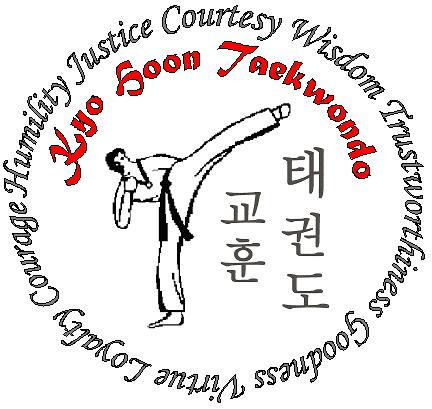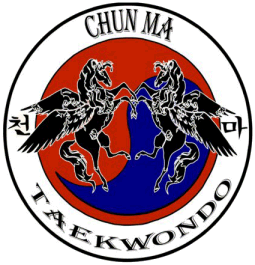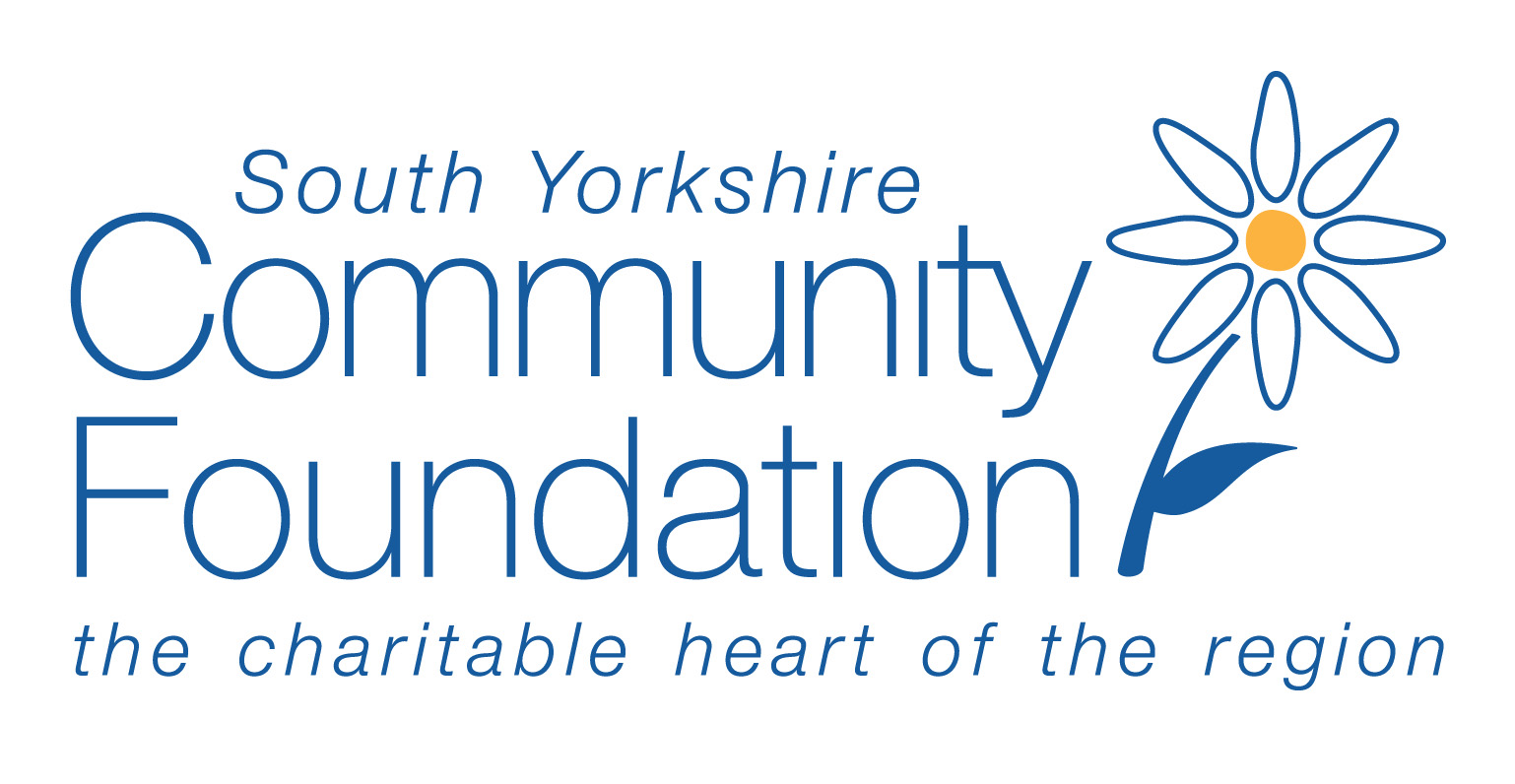Taekwondo Patterns
Patterns, or Poomses in the Korean language, are a series of defending and attacking movements performed against imaginary opponents in a set routine. Through the practice of poomse, students come to learn the applications of various techniques of Taekwondo. Poomse serve a role by aiding in development and refinement of coordination, balance, timing, breath control and rhythm, all of which are essential skills to the Taekwondo student.
Taegeuk poomse.
Palgwe
as in Poomse Palgwe...
.jpg)
The eight Taegeuk poomse are listed below;
Poomse Taeguk/Palgwe Il Jang -- Heaven
(South, Father)
The first Taeguk/Palgwe is the beginning of all Poomses. The
associated trigram represents Yang (heaven, light), therefore,
this Poomse should be performed with the greatness of Heaven.
![]()
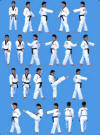
(South East, Youngest
daughter) In the depths of
the lake are treasures and mysteries. The movements of this
Taeguk/Palgwe should be performed knowing that man has
limitations, but that we can overcome these limitations. This
should lead to a feeling of joy, knowing that we can control our
future.
![]()
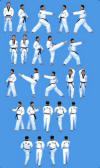
Poomse Taeguk/Palgwe Sam Jang -- Fire
(East, Second daughter)
Fire contains a lot of energy. Fire helped man to survive, but
on the other hand had some catastrophical results. This form
should be performed rhythmically, with some outbursts of energy.
![]()

Poomse Taeguk/Palgwe Sa Jang -- Thunder
(North East, Eldest son)
Thunder comes from the sky and is absorbed by the earth. Thunder
is one of the most powerful natural forces, circling, gyrating.
This Taeguk/Palgwe should be performed with this in mind.
![]()

(South West, Eldest
daughter) Wind is a gently
force, but can sometimes be furious, destroying everything in
it's path. Poomse Taeguk/Palgwe Oh Jang should be performed like
the wind: gently, but knowing the ability of mass destruction
with a single movement.
![]()

(West, Second son)
Water can move a mountain. The movements of this Poomse should
be performed like water. Sometimes standing still like water in
a lake, sometimes thriving as a river.
![]()

Poomse Taeguk/Palgwe Chil Jang -- Mountain
(North West, Youngest son)
Mountains will always look majestic, no matter the size. This
Poomse should be performed with the feeling that all movements
are this majestic and deserved to be praised.
![]()

(North, Mother) The associated trigram of this Poomse is
Yin: the end of the beginning, the evil part of all that is
good. Even in this darkness, there is still some light.
Performing this Taeguk/Palgwe, one should be aware that this is
the last Taeguk/Palgwe to be learned, it also is the end of a
circle, and therefore it is also the first, the second etc…
![]()


